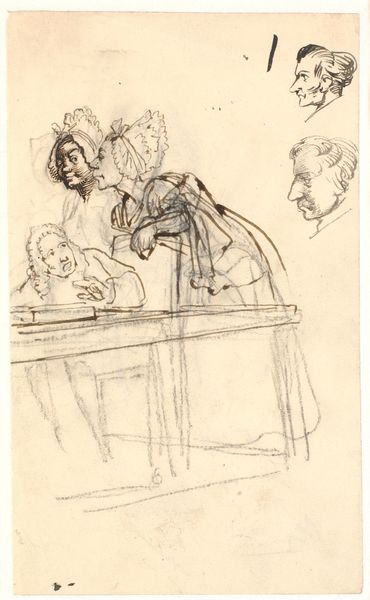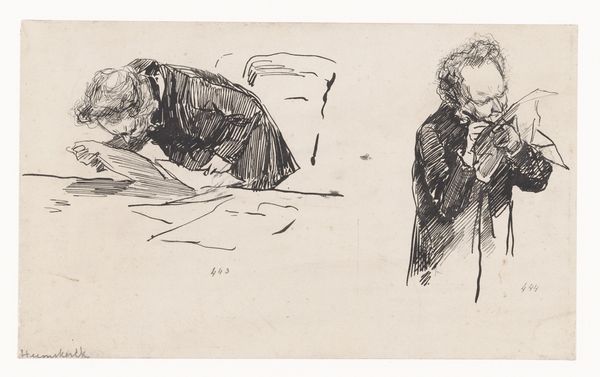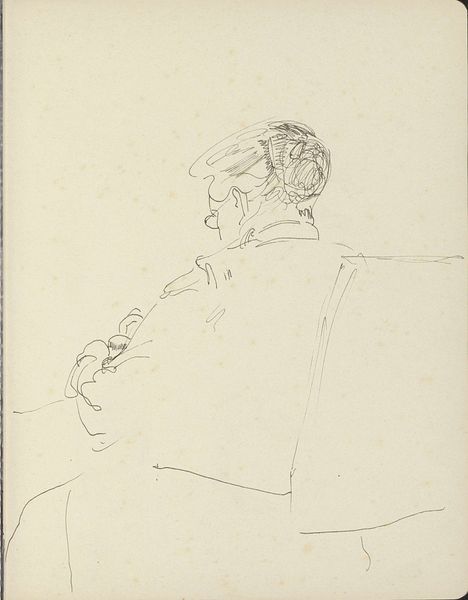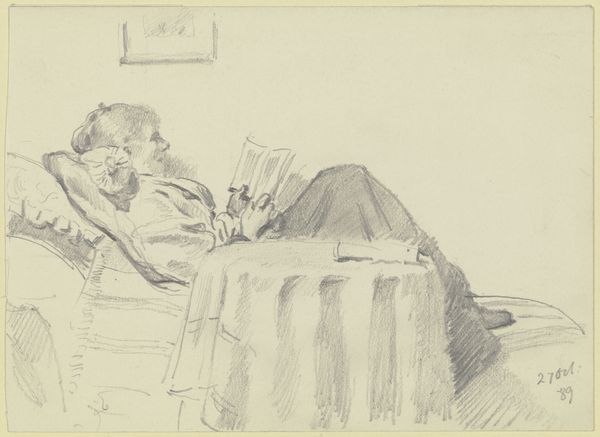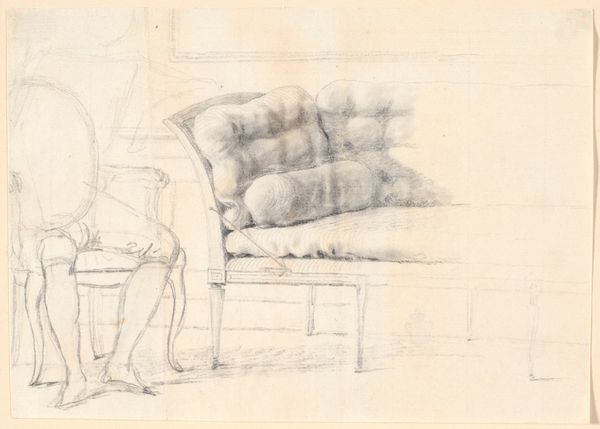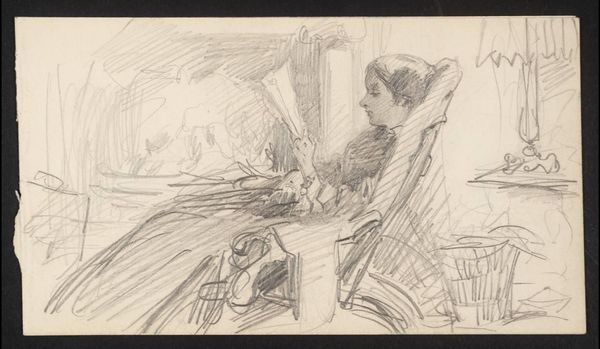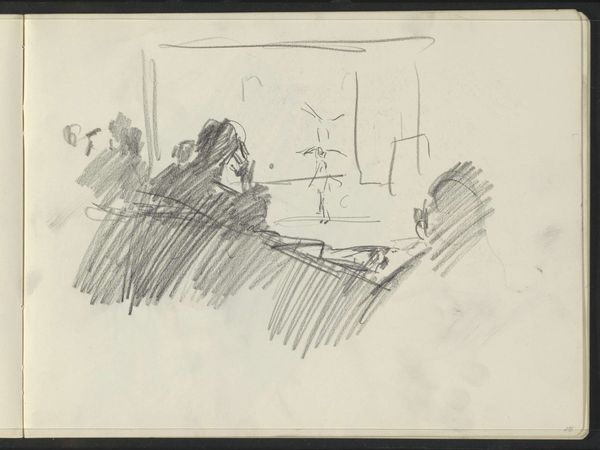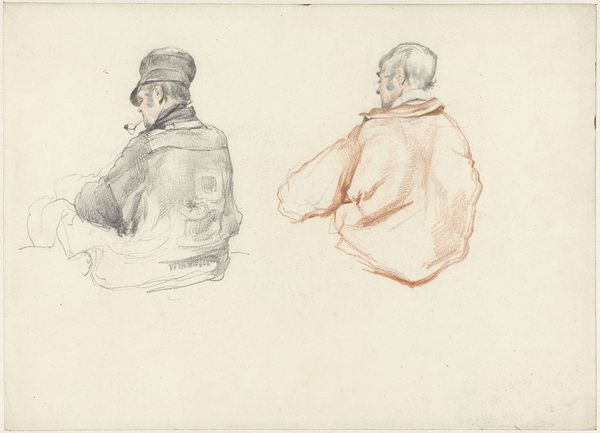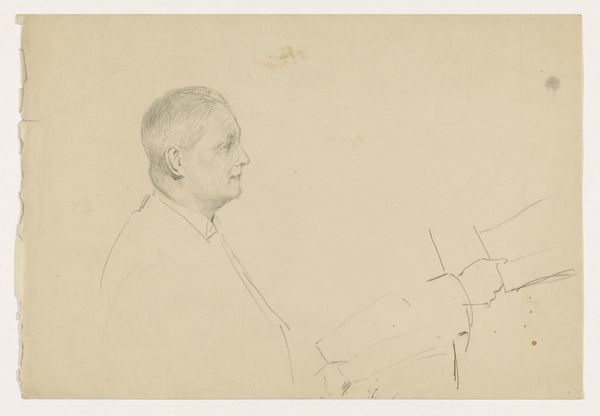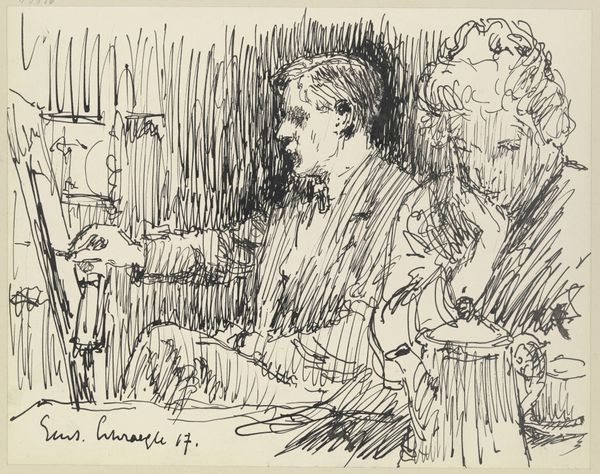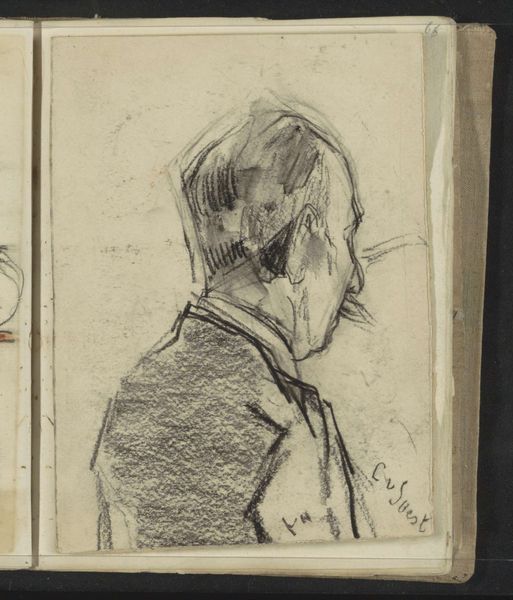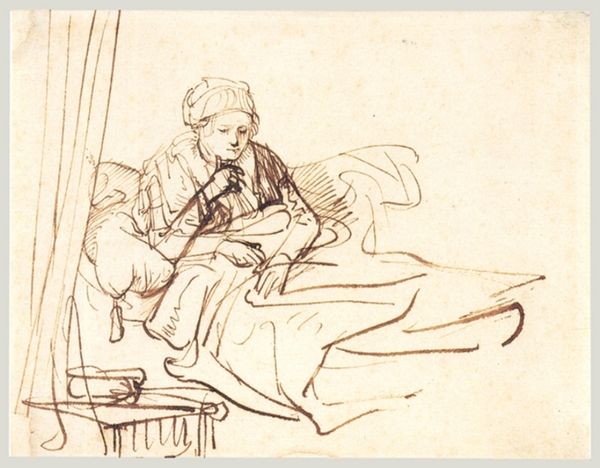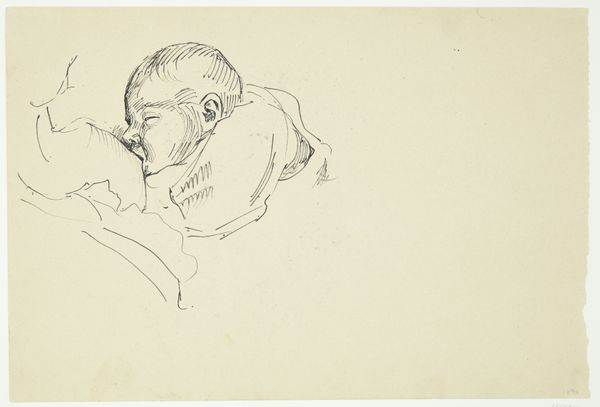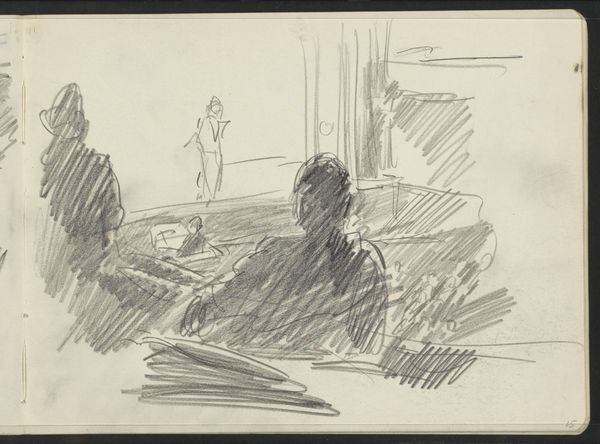
drawing, pencil
#
portrait
#
drawing
#
imaginative character sketch
#
light pencil work
#
quirky sketch
#
personal sketchbook
#
idea generation sketch
#
sketchwork
#
ink drawing experimentation
#
pencil
#
sketchbook drawing
#
storyboard and sketchbook work
#
sketchbook art
#
realism
Dimensions: height 152 mm, width 220 mm
Copyright: Rijks Museum: Open Domain
Curator: Well, this piece evokes a quiet thoughtfulness. It’s entitled "Minister Heemskerck in de Tweede Kamer," made in 1887 by Pieter de Josselin de Jong. What catches your eye? Editor: Immediately the sparseness. Just pencil on paper, but with so much negative space. You can almost smell the dust in that assembly hall; I am wondering about the price and origin of paper, an industrial product. Curator: Precisely. The medium reflects, perhaps, the hurried nature of political life. Note the rapid, almost scribbled quality, especially in the smaller figures on the right; very economical mark-making, like catching a fleeting moment. Editor: Yes, the contrast between the polished veneer of governance and the actual work. I mean, a drawing made in pencil? Was he selling these depictions of governance? Was that part of his role as head of the Rijksprentenkabinet at the time? Curator: I suppose that for an artist immersed in capturing history in the making, sketching was likely a fundamental means of recording it—almost a documentary process that has also left us this wonderfully intimate peek at political theater. Editor: True. I tend to obsess on the political backdrop in this time period, not so much as what the piece is saying or alluding to, but the conditions of art being generated and disseminated: materials and labor, as they determine access to both power and to the ability to depict it. Curator: It’s as if we are witnessing the artist’s own engagement with democracy. But what really stands out to me, is the way this artwork blends quick, observational notes with an intimate and rather contemplative aura. There’s so much vulnerability in a drawing, the thought and moment frozen onto paper for all time. Editor: I agree there's a tenderness—to be a witness, to represent the thing! This is especially true, because the piece asks, who gets depicted? And who controls the means of representation? Thanks for allowing me to examine its making. Curator: Thank you; examining this historical figure in pencil brings him—and the processes by which society pictures itself— into very human dimensions, so very telling.
Comments
No comments
Be the first to comment and join the conversation on the ultimate creative platform.
